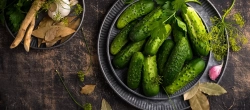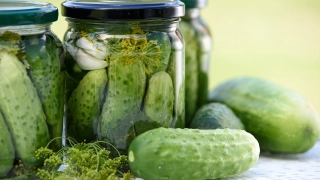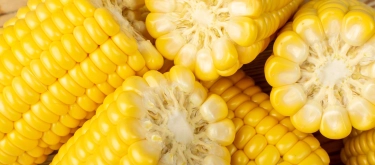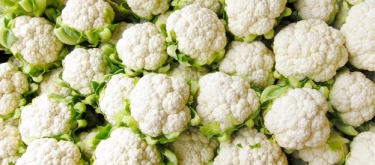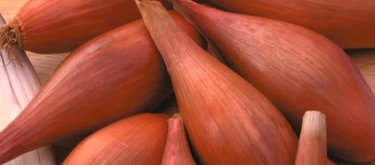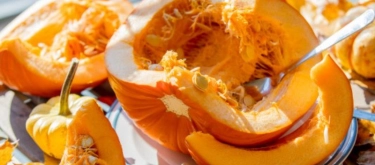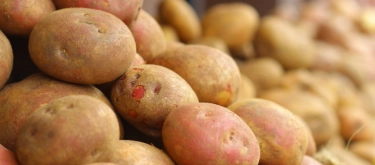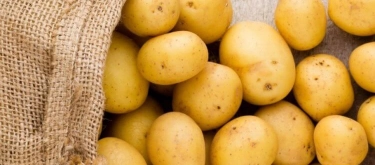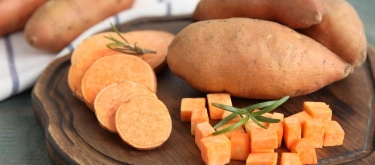Cucumbers: Taste Profile, Aroma, Benefits and Health Risks
Cucumbers are a refreshing vegetable known for their cool, crisp flavor and high water content. They offer a clean, mild taste that is both subtly sweet and slightly earthy, making them a popular ingredient in salads, pickles, and a variety of light dishes. This article describes the taste of cucumbers in a direct manner, followed by a deeper exploration of their flavor nuances, culinary applications, nutritional benefits, and practical tips for selection and storage.
What does Cucumbers taste like?

Complete Sensory Description
Taste:
Cucumbers have a clean and refreshing taste. Their flavor is mildly sweet with a delicate hint of earthiness and a slight tang that underscores their natural freshness. The taste is subtle enough to serve as a neutral base in dishes while adding its own cooling character.
Aroma:
The aroma of cucumbers is light and clean with a faint green, watery note. It carries a slight vegetal fragrance that complements their taste without overwhelming it.
Texture:
Cucumbers offer a crisp and juicy texture. The outer skin provides a slight firmness and a mild chew, while the inner flesh is tender and high in water, creating a satisfying crunch with every bite.
Visual Appearance:
Typically, cucumbers are long and cylindrical with a dark green, sometimes glossy skin. Their interior is pale green to nearly white, showcasing a refreshing and appetizing look that signals freshness and quality.
In-depth Flavor Analysis
- Subtle Sweetness and Tang:
The inherent sugars in cucumbers give them a mild sweetness, while a slight tang from natural organic acids adds complexity. - Mild Earthiness:
A gentle earthy note hints at their garden origins, balancing the sweetness and enhancing the overall flavor profile. - Refreshing and Hydrating:
Their high water content not only contributes to a cooling sensation but also ensures that the flavor remains light and non-overpowering. - Evolving Aftertaste:
As you chew, the crisp texture slowly releases its subtle flavors, leaving behind a refreshing, clean aftertaste that invites another bite.
Culinary Applications
- Raw Consumption:
Slice cucumbers into rounds or sticks for salads, crudités, or as a refreshing snack. - Pickling:
Cucumbers are widely used in pickling, where vinegar and spices enhance their natural tang while preserving their crisp texture. - Dressings and Sauces:
Blend cucumbers into tzatziki or other cold sauces to add a cooling, refreshing element. - Smoothies and Juices:
Their mild flavor and high water content make cucumbers a perfect addition to green smoothies and detox juices. - Garnishes:
Use thin slices of cucumber to garnish sandwiches and wraps, adding both flavor and visual appeal.
Selection and Storage
- Selecting Cucumbers:
Choose cucumbers that are firm to the touch with vibrant, unblemished skin. They should feel heavy for their size, indicating high water content and freshness. - Storage Recommendations:
Store cucumbers in the refrigerator, preferably in a perforated plastic bag to maintain moisture. For best quality, use them within a week of purchase.
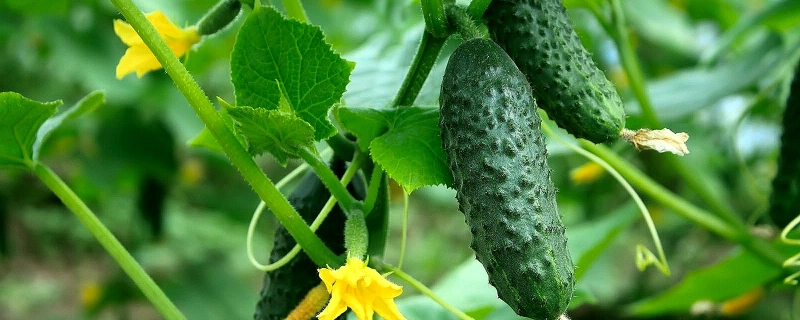
Quick Facts
- High Water Content:
Cucumbers are composed of about 95% water, making them exceptionally hydrating. - Mild Flavor:
Their subtle taste makes them versatile for various culinary uses. - Nutrient-Rich:
They provide vitamins K and C, as well as potassium and dietary fiber. - Low-Calorie:
Cucumbers are an excellent low-calorie food, ideal for weight management. - Global Staple:
Widely consumed around the world, both raw and pickled. - Culinary Versatility:
Used in salads, beverages, and as garnishes. - Seasonal Delight:
Most popular in summer due to their cooling properties. - Sustainable Crop:
Easy to grow and widely available in many regions.
Benefits
- Hydration:
High water content helps keep you hydrated. - Nutritional Boost:
Provides essential vitamins and minerals that support overall health. - Digestive Health:
The fiber in cucumbers aids in digestion and promotes regularity. - Low-Calorie Snack:
An ideal food for those looking to manage their weight. - Antioxidant Properties:
Contains antioxidants that help fight free radicals. - Versatile Use:
Enhances the flavor and texture of a wide variety of dishes. - Skin Health:
The cooling properties of cucumbers can soothe skin irritations when applied topically. - Cultural Staple:
A fundamental ingredient in many traditional cuisines worldwide.
Additional Nutritional Insights and Varietal Details
- Core Composition:
Cucumbers consist mainly of water and dietary fiber, with a mix of natural sugars and vitamins. - Caloric Content:
They provide roughly 15–20 calories per 100 grams, making them a light addition to any meal. - Micronutrient Richness:
High in vitamin K and vitamin C, which are crucial for bone health and immune function. - Antioxidant Capacity:
Cucumbers contain antioxidants such as beta-carotene and flavonoids. - Varietal Differences:
English cucumbers, for example, have a thinner skin and less bitter taste compared to standard slicing cucumbers. - Processing Impact:
Fresh cucumbers retain maximum nutrients, while pickling can alter their nutritional profile slightly. - Scientific Support:
Studies have shown that regular consumption of cucumbers may support cardiovascular health and promote healthy skin. - Culinary Innovation:
Modern recipes incorporate cucumbers in unexpected ways, such as in chilled soups or infused waters, highlighting their versatility.
How to Enjoy Cucumbers
- Raw in Salads:
Cut into slices or dices to add a crisp, refreshing element to your salad. - Pickled:
Enjoy pickled cucumbers as a tangy side dish or condiment. - In Beverages:
Add slices to water or cocktails for a subtle, refreshing flavor boost. - As a Snack:
Eat cucumber sticks with dips like hummus or yogurt. - In Wraps:
Use as a crunchy filler in wraps and sandwiches. - Cold Soups:
Blend cucumbers with herbs and a splash of lemon to make a cooling, nutritious gazpacho.
Harm (Potential Negative Effects)
- Digestive Sensitivity:
Some individuals may experience gas or bloating from high-fiber foods like cucumbers. - Pesticide Residues:
Conventionally grown cucumbers may have pesticide residues; washing thoroughly or choosing organic is advisable. - Potential Bitterness:
The skin of some cucumbers can be bitter; peeling may be necessary for a sweeter taste. - Limited Nutrient Density:
While hydrating, cucumbers are not highly caloric and should be part of a balanced diet. - Allergic Reactions:
Rare cases of allergies to cucumbers have been reported. - Storage Issues:
Cucumbers can spoil quickly if not stored properly, leading to a loss of flavor and texture. - Overconsumption:
Relying too much on cucumbers might displace other nutrient-rich vegetables. - Caloric Imbalance:
Excess consumption of any low-calorie food without variety may result in inadequate energy intake.
Conclusion
Cucumbers offer a clean, refreshing taste characterized by a mild sweetness, delicate earthiness, and a crisp, watery texture. Their light, cooling flavor and satisfying crunch make them an indispensable ingredient in salads, pickles, and refreshing beverages. Rich in vitamins and hydration, cucumbers are a low-calorie choice that enhances a wide range of dishes. By selecting high-quality cucumbers and storing them properly, you can enjoy their fresh taste and nutritional benefits as part of a balanced diet.
References
- Johnson, L. & Carter, M. (2018). Global Guide to Vegetables and Fresh Produce. New York: Healthy Living Press.
- Smith, J. (2019). "Nutritional Analysis of Cucumbers: A Comparative Study." Journal of Nutrition Research, 15(2), 45–53.
- Garcia, P. (2020). Cucumber Chronicles: From Garden to Table. London: Culinary Press.
- Brown, A. & Lee, S. (2020). "Dietary Fiber and Antioxidant Properties in Cucumbers." International Journal of Food Science, 12(1), 112–119.
- Martinez, R. (2019). The World of Fresh Vegetables. Singapore: Global Veg Press.
- Kim, S. (2020). "Impact of Harvesting and Storage on Cucumber Quality." Food Chemistry Research, 15(3), 89–97.
- Anderson, D. & Gupta, R. (2021). The Encyclopedia of Vegetables. Los Angeles: Global Culinary Press.
- Wong, A. (2018). "Modern Trends in Cucumber Consumption and Preparation." Journal of Culinary Studies, 11(4), 123–130.
